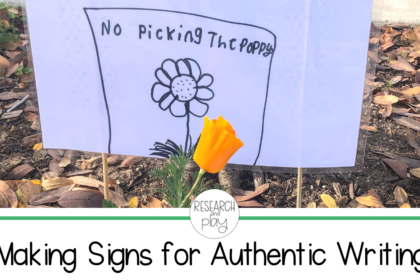With the final post in my Intentional Daily Schedule series, I’ll be talking about Writer’s Workshop and how you can structure it to support every kind of writer in your kindergarten classroom. So far, we’ve discussed Play Centers, Morning Meeting, Math, Word Study, and Reader’s Workshop. You can click on each of those to learn more! As we approach the end of the school year, I am able to reflect on what went well and what I’d like to tweak. In writing this series, I’ve been able to reflect and adjust more so than I usually would, so I hope you know that these tips or strategies have been vetted by a real teacher who uses them every day! Here’s another view of my overall daily schedule so you can see where Writer’s Workshop fits in:
Writer’s Workshop is always one of those things that I feel like could be tweaked over and over again. Every year, students come to you with so many different kinds of writing skills. You may have someone who can whole-word write and someone who cannot yet hold a pencil correctly. Let’s talk about how you can support and challenge them both after we first talk about materials.
I have access to the Lucy Calkin’s Units of Study in Writing for Kindergarten. These are great for building up a love of writing and encouraging students to write about a variety of things. I also like the Units of Study for helping to set up the structure of workshop early in the year.
However, I do not feel like these units really provide enough scaffolds or supports for students who are not yet writing. Typically, my students enter kindergarten with emergent writing skills. Very few are able to actually associate letters with sounds in writing in the beginning of the year. Because of this, I structure how I teach workshop very differently. I use a few different resources for general support:
Plus a variety of things I’ve created on my own. I will link some rubrics and checklists at the end of this post if you are interested. My students have writing folders where they keep and organize their pieces. I use the materials provided in the Writing Through the Year units to create these folders:
Also, I structure the “what” of my students’ workshop time to correlate with our topic or unit of study in reading or science. Here is the list of units that we teach in kindergarten:
Typically our topic of writing reflects which theme or unit we are studying. Also, my students usually complete one writing piece for each of the three main kinds of writing in kindergarten: Opinion, Explanatory, and Narrative.
Here are some pictures from when we studied community helpers and wrote an opinion piece about what we wanted to be when we grow up:
Now, let’s talk structure of the lesson. No matter if I am using Lucy Calkins or Writing Through the Year or my own lesson plans, I will always give a short (10-12 minutes) minilesson where I do some modeling. I feel like modeling is KEY for writing development. I love giving students time to verbalize what they want to write about, so our minilesson typically includes some partner or group share time. Then, I release students to their tables. They get their folders and the writing paper from a paper organizer we use, then they start.
Sometimes, they begin with a picture (see above) then do a writing piece the next day. Other times, I provide a sentence stem that they will copy and expand upon, then draw. Some days we have structured paper with lines or boxes, but other days we use blank white paper. All of this is planned out by me ahead of time according to how I want their writing to develop.
Early in the year, we begin with pictures. Later on, we begin adding labels of initial sounds to the pictures. Next, we will introduce a short sentence with CVC words. Then, we begin to use sentence stems where students must think of one word on their own but can use a word list. Eventually, we take away the word lists and students are sound spelling. During the year, I may need to pull a group of 5-6 students who all work with me on the same sentence. At the end of the year, I only work with 1 or 2 students who still have trouble completing a sentence without support to sound out words. All other students are writing independently, sound spelling words or using the word wall.
I hope this was useful for you as you think about how you teach Writer’s Workshop. Below are some narrative writing resources I’ve created and used. Let me know if you have any questions!











I think teaching writing in kindergarten is SO hard!